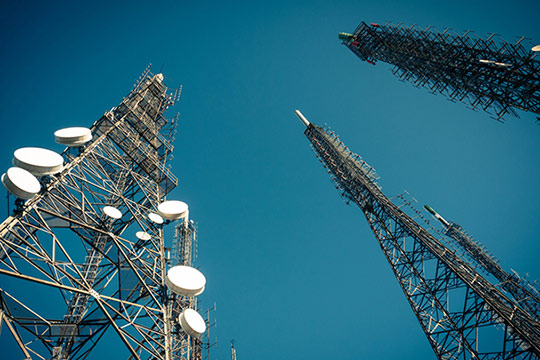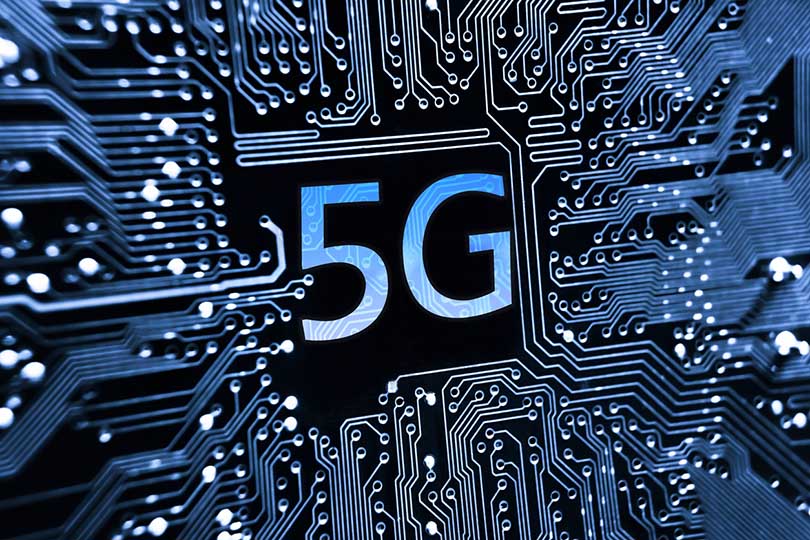TECHNOLOGY FOCUS
The steady growth in commercial interest in RF, micro-/mm-wave and Terahertz wireless communication networks and systems, especially in wireless communications such as 5G and Beyond/6G, Internet of Things (IoT), security and wireless sensor applications, and military and transportation electronics, has provided a significant challenge to conventional RF, micro-/mm-wave circuits and their design methodologies.
The fifth generation (5G) technology is one of the most hyped topics in technology with enthusiasts promising it will be the gateway to virtual reality (VR), augmented reality, the Internet of Things (IoT), 3D services, pervasive high-resolution video and self-driving cars. The development of wireless communication over the last three decades has revolutionized our lives. In the past decade there has been a proliferation of wireless services and devices, followed by increasing demands for higher data rates.
Many of new technologies will rely extensively on enhancements to Multiple-Input-Multiple-Output (MIMO) systems including systems such as mm-Wave cellular systems and massive MIMO. Recent advances in RF, micro-/mm-wave computer-aided circuit design technology suggest the feasibility of interfacing electromagnetic simulations directly to sophisticated optimization systems. With the availability of powerful computers this optimization-based approach to the design of RF, micro-/mm-wave circuits become a desirable tool. CAD has become an essential tool in the design and manufacturing of RF, micro-/mm-wave circuits and 5G and Beyond/6G wireless systems.
.


COURSE CONTENT
This 3-day course gives theoretical insight into the 5G and Beyond/6G wireless communication system design from a system point of view and provide a thorough understanding of principles, technologies and the state-of-the-art of the wireless communication systems – 5G and Beyond/6G. To familiarise designers with the latest development of 5G and Beyond/6G wireless communication systems and different approaches that are used in their analysis. To enable designers to understand application in systems such as 5G and Beyond/6G wireless systems, and wireless RF, micro-/mm-wave and Terahertz circuit and system design. The aim of this course is to provide a thorough understanding of principles, techniques and the state-of-art of the RF, micro-/mm-wave and Terahertz wireless circuit system design. Demonstration some of available CAD software packages (e.g. EPFIL, ADS, emSonnet, CST and Matlab) will be used to illustrate the performance of design circuits and systems.
The individual objectives to achieve this aim can be summarised as follows:
- To enable participants to understand 5G and Beyond/6G wireless communication from a network system view point to provide a thorough understanding of principles, technologies and the state-of-art of the wireless communication systems.
- To give theoretical insight into the wireless RF, micro-/mm-wave and Terahertz field;
- To enable you to use your knowledge to design an RF or micro-/mm-wave and Terahertz filters, amplifiers, linearisers, antennas, transceivers and subsystems;
- To give the adequate background to enable you to analyse subsystem components and circuits such as filters, amplifiers, linearisers and antennas;
- To enable participants to understand circuit design in technologies such as waveguides, and microstrip.
- To familiarise participants with the latest development of 5G and Beyond/6G wireless systems and technologies and different approaches that are used in their analysis.
- The development of an integrated perspective to the design of wireless systems looking at the trade-offs of system requirements and hardware capabilities.
WHO SHOULD ATTEND
The methods described here are useful for anyone designing hardware or software for 5G and B5G/6G wireless communication and Internet of Things (IoT) systems. Postgraduate and final year undergraduate students, engineers, managers and scientists who need an expanded, up to date understanding of advanced 5G and Beyond/6G and IoT wireless system design.

Day 1.
The first day begins with a theoretical insight into 5G and Beyond/6G wireless communication systems, a review of 5G and Beyond Technology and wireless communication system design. Application of 5G and Beyond will be briefly reviewed. The sub-6 GHz (e.g. n77: 3.3-4.2 GHz; n78: 3.3-3.8 GHz; n79: 4.4-5.0 GHz) and mmWave (e.g. n261: 27.5-28.35 GHz; n257: 26.5–29.5 GHz; n258: 24.25-27.5 GHz; n260: 37-40 GHz) 5G frequency bands will be reviewed briefly. Day 1 continues with a study of a basic theory of high frequency filters, filter technologies, and filter design for 5G and Beyond wireless communication applications. The rest of the day will be devoted to waveguide and microstrip filter, diplexer and multiplexer synthesis, analysis and design procedures. The EPFIL software package developed by instructor seeks to improve waveguide filter and diplexer design and decrease performance variations without creating overly stringent manufacturing tolerances. The accompanying manual helps the reader to cut design time and improve accuracy by quickly and easily predicting performance parameters before building costly prototypes. Using the mode-matching method as a foundation, the software supplies a full-wave solution for filter discontinuities, aiding you in the design of E-plane waveguide filters specifically intended for RF, micro-/mm-wave 5G and beyond applications. This means you can substantially reduce development and production costs, reduce time-to-market, and effectively increase circuit performance.
- 5G and Beyond wireless systems overview
- Evolution of wireless mobile technologies
- 5G Use cases
- 5G standardisation timeline
- 5G frequency spectrum
- Basic theory of high frequency filters
- Filters characteristics
- Filter design procedure
- Overview of filter technologies
- Waveguide and microstrip filters
- Exercise: waveguide bandpass filter design
- Demonstration some of available CAD software packages (e.g. EPFIL, ADS, emSonnet, and CST)
Day 2
begins with a study of a basic theory of antennas, antenna systems fundamentals, including basic antenna properties: impedance, directivity, radiation patterns, polarization, etc. Antennas systems such as mMIMO systems, beamforming and beamforming architectures will be briefly reviewed. Rest of the day continues with fundamental multi antenna array theory, types of antenna arrays, feed network design considerations and rectennas for wireless energy harvesting for sub-6 GHz and mmWave 5G and Beyond wireless communication system applications and health effects from 5G exposure.
- Recap from Day 1
- Basic theory of antennas
- Antenna Systems Fundamentals
- MIMO Antenna Technology
- Massive MIMO Antenna Systems
- Examples of 5G Sub-6 GHz and mmWave Massive MIMO
- Beamforming and beamforming architectures
- SIngle RF chain multi-user beamforming
- Adaptive beam-steering technique
- Feed network design considerations
- Design of antennas arrays
- Exercise: microstrip antennas array design
- Rectennas for wireless energy harvesting applications
- EMF exposure: Common sources
- Health Effects from 5G Exposure
- Example: Assessment of the exposure of the general public to 5G em waves
- Example: Massive MIMO EMF exposure
- Demonstration some of available CAD software packages (e.g. ADS, emSonnet, and CST)
Day 3
focusses on a review of wireless subsystem and transceivers. Also, it involves a considerable amount of design of wireless circuits and transceivers and covers link budget calculations together with their parameters for current and next generation wireless communication systems. Day 3 continues with overview of wireless communication transceiver architectures and wireless system design, transmitter system parameters, signal distortion and spectral regrowth; receiver system parameters, direct and heterodyne conversion, analysis of noise characteristics; noise figure & link budgets; assessing performance of wireless communication systems. Finally, the practical implementation of linearised power amplifiers, filters, filtennas and antenna arrays will be reviewed and discussed.
- Recap from Day 2
- Introduction to wireless transceiver architectures
- Noise in wireless receivers
- Sensitivity, minimum detectable signal and dynamic range
- Wireless receiver design
- Spectral regrowth and linearity
- Simulation of spectral regrowth with different modulation formats
- Evaluation of nonlinear distortion in 5G Transmitters
- 5G wireless system specifications
- Free space path loss, link budgets and capacity of the link
- Exercise: wireless communication system design
- Evaluation of wireless system performance
- Demonstration some of available CAD software packages (e.g. EPFIL, ADS, emSonnet, CST and Matlab)
Course summary, conclusion and discussion

